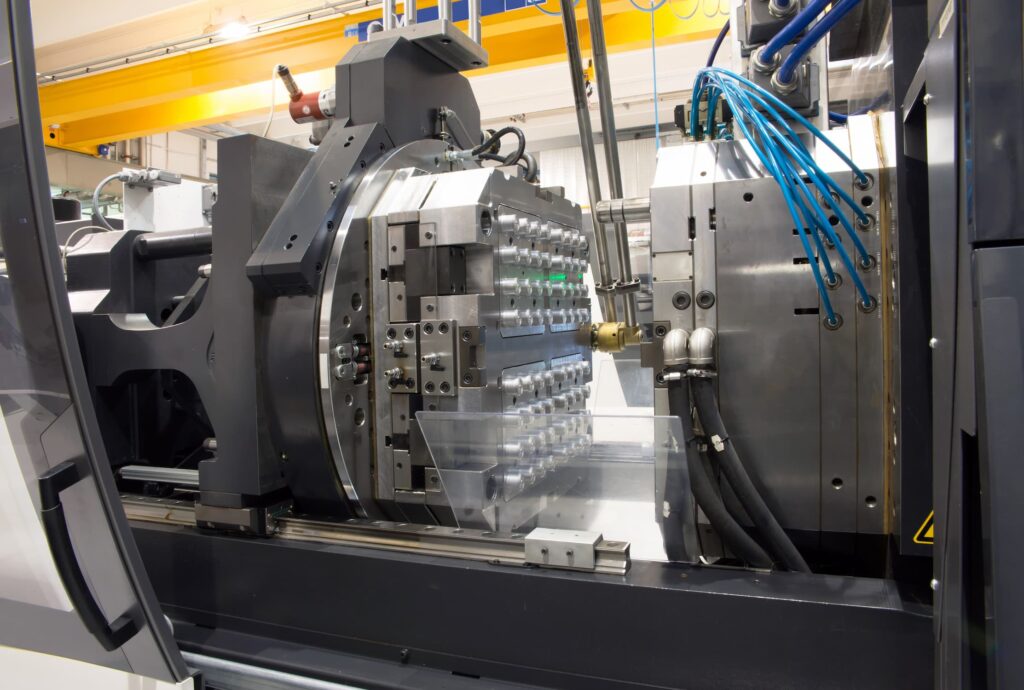INJECTION MOLDING SERVICE
In the last decade, the die and mould industry has evolved by leaps and bounds. It has become one of the major contributors to the Indian economy. With the rise of new-age 3D printing technologies, moulding services have consistently incorporated the latest technologies to provide top quality moulds consistently. Mould manufacturing is a process of creating a pattern on a block of metal and later injecting or blowing plastic materials to create objects desired. The ultimate objective of the mould is to help with the production of multiple uniform copies of the end product to the tune of a few lakh pieces with repeatability in quality and accuracy.
The injection mould is made out of various materials like Aluminium, P20, Hardened Steel, OHNS, C45, etc., basis the application and life expectancy of the mould. As far as moulding processes are concerned, we provide services across blow moulding, plastic injection moulding and over-moulding.

How does Injection Molding Work?
Plastics can be classified broadly into two types, thermosets and thermoplastics. Thermosets strengthen when heated but cannot be remoulded if reheated. Thermoplastics, on the other hand, can be heated and cooled for multiple cycles for remolding.
Hence, we use thermoplastic materials for Injection Molding. The process begins with plastic material pellets which are fed from a hopper into a barrel. The barrel contains an internal screw. This screw-shaped device feeds material by rotating. Heater bands on the outside of the barrel heat the barrel and screw, melting the plastic into a molten state. This molten plastic is then injected into the mold. Once the material is cooled down, the two plates separate and with the help of ejector pins, the parts are removed from the injection mold.
What is the difference between Soft tooling and Hard tooling?
There are basic differences between these methods. The similarity is the method of manufacturing. They are both manufactured out of blocks of metal using a CNC or VMC. They both can provide parts with dimensional accuracy and materials of choice. The essential difference between the two is the life of the mould. As the name suggests, soft tools are used for a shorter batch of manufacturing in terms of production quantity. In comparison, hard tools have a longer life and can deliver a very high volume of parts. For example, soft tools can be used to manufacture a few thousand pieces, although a hard tool can be used to deliver lakhs of pieces. Hard tools are hardened using various processing of heating and post-treatment which enhances their life.

Frequently Asked Question
The materials used to make molds are Aluminium, P20, Hardened Steel, OHNS, C45.
Yes, we can add masterbatches in the hopper along with the primary material to achieve a part in the desired color.
An average timeline is about 6-8 weeks.
It varies from a few thousand pieces to lakhs of pieces, depending on the material and number of cavities.
There are multiple options like Acrylonitrile butadiene styrene (ABS), Polypropylene (PP), Polyethylene (PE), Nylon, Glass-filled Nylon, Polycarbonate(PC), etc.